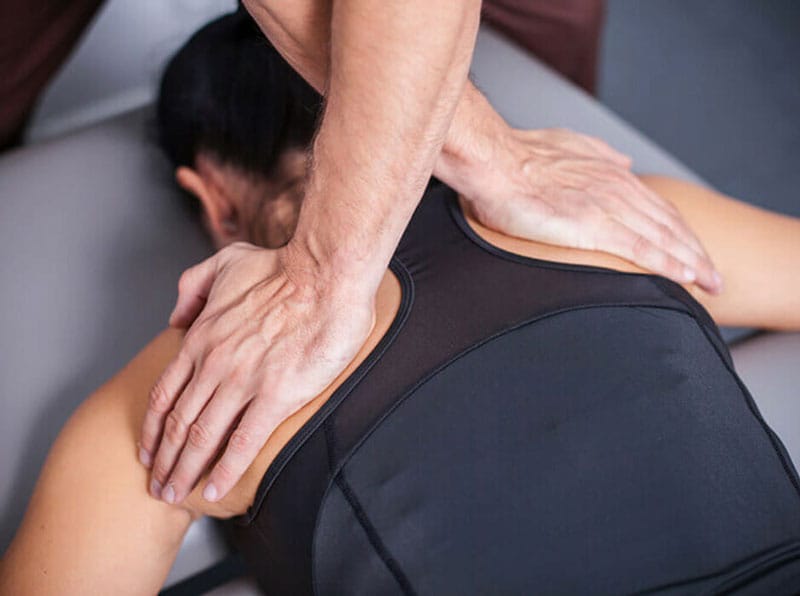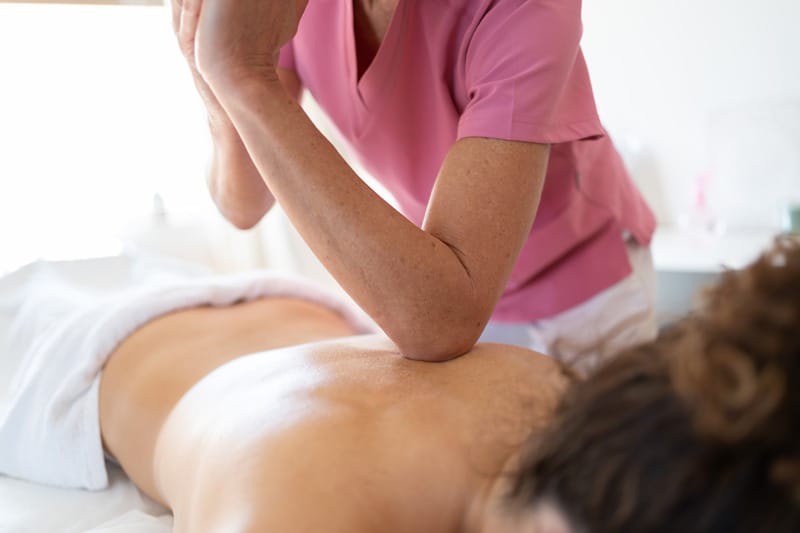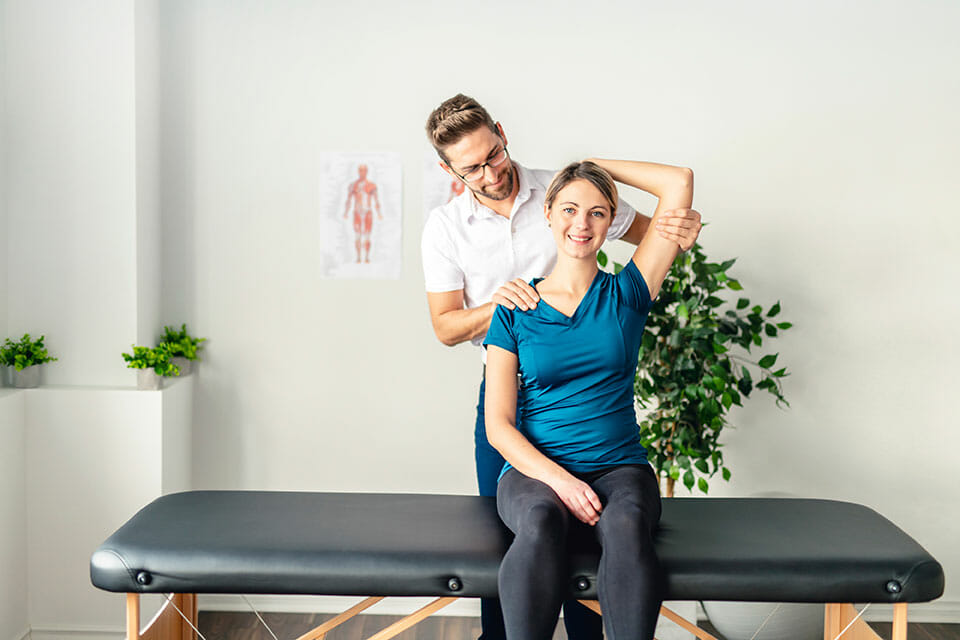Why Osteopath
Have you found yourself asking: What is this osteopathy that my insurance plan covers and how is it different from Physiotherapy or Chiropractic? Good Question

What Is Osteopathy
Osteopathy is a patient centered form of manual health-care that involves different aspects of the person’s neuro-musculoskeletal system including the muscles, joints, nerves and other skeletal tissues. It recognises the important link between the structure of the body and how it functions. Osteopathic practitioners (university level) are trained in musculoskeletal diagnosis, management and treatment involving standardized medical examinations of the different human systems, which forms the clinical rationale for treating a patient’s condition. Osteopathic treatment varies from practitioner to practitioner, but generally involves manual therapy techniques including; massage, stretching, joint mobilisation and manipulation, dry-needling as well as management via exercise prescription. Unlike traditional medicine which is reactive and focuses on treating symptoms, osteopathy aims to target the underlying causes of your dysfunction through manual therapy as a proactive approach to address prevention.
What To Expect In Your Osteopathy Session?
- Take your medical history
- Provide a physical examination (orthopaedic and neurological testing)
- Explain the presenting complaint and reasoning behind presentation
- Formulate a treatment protocol involving manual therapy
- Provide post treatment clinical re-evaluation
- Give suitable at-home management structures (exercise prescription) to follow between appointments and to aid in long-term care and prevention
Common complaints Osteopathic manual practitioners see:
- Hips, back and shoulder pain
- Headaches and migraines
- Sports injuries and soreness
- Repetitive strain injuries
- Acute trauma and chronic pain dysfunctions
- Nerve pain and dysfunction
- Postural complaints
Osteopathic treatment can offer a variety of benefits, including:
- Reduced pain and stiffness: Addressing joint restrictions and muscle tension can alleviate pain in the back, neck, joints, and other areas.
- Improved mobility and range of motion: By enhancing joint mobility and addressing fascial restrictions, osteopathy can help you move with greater ease.
- Enhanced athletic performance: Improved mobility and reduced pain can benefit athletes by optimizing their performance and reducing the risk of injuries.
- Improved circulation and lymphatic drainage: Osteopathic techniques can promote better circulation and lymphatic drainage, leading to improved overall health.
Boosted immune function: Research suggests osteopathy may positively influence the immune system.
The 4 main principles of Osteopathy:
- The body is a unit; the person is a unit of body, mind, and spirit.
- The body is capable of self-regulation, self-healing, and health maintenance
- Structure and function are reciprocally interrelated
- Rational treatment is based upon an understanding of the basic principles of body unity, self-regulation, and the interrelationship of structure and function.
Book an initial assessment at our Spadina Location with our experienced osteopathic manual practitioner Yuma Hemphill
Book an initial assessment at our Oakville Location with our experienced Osteopath Caitlin MacLeod
Osteopathy is based on the principle that the body’s structure (bones, muscles, ligaments, and connective tissues) and function are interrelated. Osteopaths believe that the body has a natural ability to heal itself when its structure is in balance.
- Treatment is holistic, meaning it considers the entire body, not just the specific area of pain or discomfort. Osteopaths use their hands to diagnose, treat, and prevent a wide range of health problems.
Techniques used & personalized approach
- Techniques include soft tissue manipulation, joint mobilization, stretching, and sometimes more subtle hands-on techniques such as cranial osteopathy.
- Osteopaths may also address lifestyle factors, such as posture, diet, and stress, that might be contributing to the patient’s condition.
- Often involves longer and more hands-on sessions focused on whole-body treatment. The osteopath may spend more time understanding the patient’s overall lifestyle and health.

Overall experience & treatment structure with a physioDNA Osteopath
- Comprehensive Evaluation: The osteopath will conduct a thorough assessment of your medical history, lifestyle, posture, and any areas of discomfort or concern.
- Baseline Measurements: Assessment of range of motion, muscle strength, joint mobility, and alignment to establish a baseline for future reference.
1. Initial Assessment
- Health Objectives: Set specific goals such as reducing muscle tension, improving posture, managing chronic pain, or enhancing mobility.
- Frequency of Treatments: Depending on your health status and goals, decide on the frequency of maintenance sessions (weekly to once a month, ).
2. Goal Setting
- Manual Therapy: Regular sessions may include soft tissue manipulation, joint mobilization, stretching, and other hands-on techniques to maintain musculoskeletal balance.
- Postural Correction: Focus on correcting posture and alignment to prevent strain and injury.
- Lifestyle Advice: Guidance on ergonomics, sleeping positions, exercise routines, and stress management techniques that support your overall health.
3. Treatment Plan
- Home Exercises: Tailored exercises to strengthen weak areas, improve flexibility, and maintain the benefits of osteopathic treatment between sessions.
- Stretching Routines: Specific stretches to keep muscles relaxed and joints mobile.
4. Exercise Prescription
- Regular Re-Evaluations: Periodic assessments to monitor progress, adjust the treatment plan, and ensure goals are being met.
- Feedback Sessions: Discuss how you’re feeling between sessions, and address any new or ongoing concerns.
5. Monitoring Progress
- Ongoing Care: Continue with regular osteopathic treatments to maintain balance, prevent recurrence of issues, and support overall well-being.
- Adjusting Frequency: The frequency of visits can be adjusted based on your health, lifestyle changes, or new goals.
6. Long-Term Maintenance
- Patient Education: Learn about body mechanics, how to avoid injuries, and the importance of maintaining good habits.
- Self-Care Strategies: Techniques such as using heat or ice, relaxation exercises, and proper nutrition to support your health between osteopathic sessions.
7. Education and Self-Care
- Annual Review: Reassess your treatment plan annually to ensure it continues to meet your needs and adjust as necessary.
- Adapt to Life Changes: Modify the plan if there are significant changes in your lifestyle, such as starting a new job, engaging in new physical activities, or experiencing health changes.
8. Review and Adaptation
Summary
- Consistency: Regular osteopathic treatments tailored to your needs.
- Proactive: Focus on prevention and early intervention for any issues.
- Holistic: Integration of lifestyle advice and exercises to support overall health.



